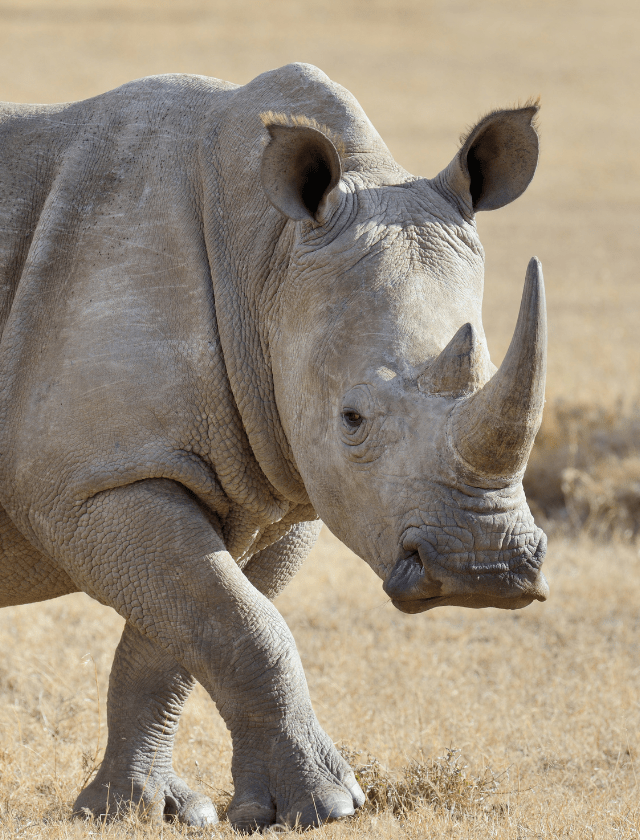The rhinoceros, also known as rhino, is a large and powerful herbivorous mammal that is native to Africa and Asia. There are two species of African rhino: the white rhinoceros and the black rhinoceros, and three species of Asian rhino: the Indian rhinoceros, the Javan rhinoceros, and the Sumatran rhinoceros. In this description, we will focus on the African rhino.
The African rhino is a massive animal that can weigh anywhere from 1,800 to 5,500 pounds (800 to 2,500 kg) and stand up to 6 feet (1.8 meters) tall at the shoulder. They are known for their tough, armor-like skin and their distinctive, prehistoric-looking horn. The white rhinoceros is the largest of the five rhinoceros species, while the black rhinoceros is slightly smaller.
Due to their size and formidable strength, rhinos are not typically hunted by humans for food. However, they have been hunted extensively for their horns, which are highly prized in some cultures for their perceived medicinal properties. Poaching has caused a significant decline in rhino populations in recent years, and all species of rhino are considered to be endangered.
African rhinos are found in a variety of habitats, from grasslands and savannas to dense forests and wetlands. They can be found in several African countries, including South Africa, Zimbabwe, Namibia, and Kenya. They are adapted to live in both hot and cold weather and can be found in areas with temperatures ranging from below freezing to over 100 degrees Fahrenheit (38 degrees Celsius).
Rhinos are mostly active during the cooler hours of the day, such as dawn and dusk, and tend to rest in shade during the heat of the day. They are typically solitary animals but may occasionally gather in small groups, especially when seeking out water sources.
As herbivores, rhinos feed primarily on grasses, leaves, shoots, and twigs. They are capable of consuming large amounts of vegetation each day, with some individuals eating up to 100 pounds (45 kg) of vegetation in a single day.
Rhinos are essential members of their ecosystems, playing a crucial role in maintaining the balance of the natural world. They are keystone species, meaning that their impact on the ecosystem is disproportionate to their numbers. For example, rhinos help to maintain grasslands and savannas by grazing on vegetation, which helps to promote new growth and provides habitat for other animals.
In conclusion, the rhinoceros is a massive and powerful herbivorous mammal that plays a critical role in maintaining the balance of the ecosystems in which it lives. While they are not typically hunted for food, they are at great risk from poaching, which has led to a significant decline in their populations. It is essential that we work to protect these magnificent creatures to ensure that they continue to thrive for generations to come.



